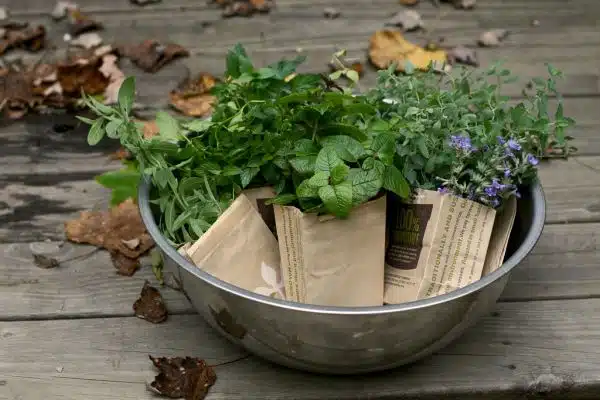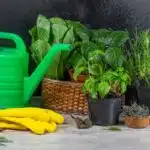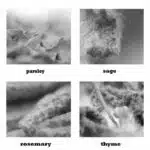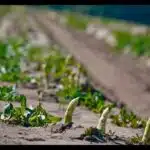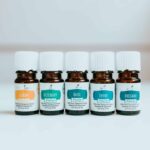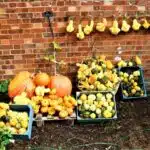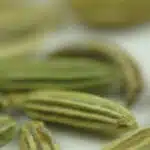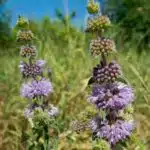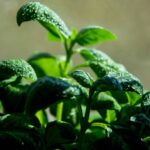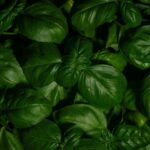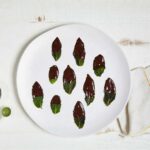Herbs have been used for centuries as natural remedies and flavor enhancers in cooking. Their therapeutic properties and aromatic qualities make them a valuable addition to any garden, kitchen or medicine cabinet. Harvesting herbs is an essential step in the process of growing them, as it not only allows us to enjoy their benefits but also encourages new growth.
Knowing when to harvest and how to do it properly can be a daunting task for beginners. In this article, we will explore the art of harvesting herbs and some tips on how to keep them growing throughout the season. Whether you are a seasoned gardener or just starting out, these techniques will help you get the most out of your herb garden and enhance your culinary creations with fresh, aromatic herbs.
Understanding The Growth Cycle Of Herbs
Herbs are a popular addition to any garden due to their versatility and usefulness in cooking, medicine, and cosmetics. As such, it is important for gardeners to understand the growth cycle of herbs in order to maximize their yield. The first stage of herb growth is the germination phase where seeds sprout and develop into seedlings. During this stage, it is essential to keep the soil moist and warm to facilitate healthy root development.
The second stage of herb growth is the vegetative phase where the plant grows stems, leaves, and roots. This stage lasts until the plant reaches maturity and begins producing flowers or fruit. It is during this phase that gardeners should focus on providing adequate nutrition to promote healthy foliage growth. In addition, careful pruning can increase bushiness and encourage more leaves to grow.
The final stage of herb growth is the reproductive phase where the plant produces flowers or fruit. This stage marks the end of vegetative growth as energy shifts towards producing seeds for future generations. Gardeners can maximize herb yield by harvesting during this phase when plants have reached maturity but before seeds have fully developed. Understanding these stages allows for proper care throughout each phase and optimal harvest timing for a bountiful herb garden. Moving forward, choosing the right time to harvest your herbs is crucial for preserving their quality and potency.
Choosing The Right Time To Harvest
Harvesting herbs at the right time is crucial for obtaining the best flavor and medicinal properties. The timing of harvest varies depending on the herb and its intended use. Generally, herbs should be harvested before they flower, as this is when the plant’s energy is concentrated in the leaves. However, some herbs are best harvested after flowering, such as chamomile or elderflowers.
Harvesting frequency also plays a role in maintaining healthy herb plants. Regular harvesting encourages new growth and prevents plants from becoming too woody or leggy. For annual herbs such as basil or cilantro, it’s best to harvest every few weeks to prevent them from going to seed. Perennial herbs like mint or thyme can be harvested more frequently throughout their growing season.
Handling herbs after harvest is just as important as timing and frequency. To preserve freshness and flavor, it’s essential to handle herbs with care. After harvesting, remove any damaged or diseased leaves and gently rinse the remaining leaves with cool water. Then, pat them dry with a clean towel or let them air dry before storing them in airtight containers.
In summary, choosing the right time to harvest depends on the herb and its intended use, while regular harvesting frequency promotes healthy plants. Proper handling after harvest ensures maximum freshness and flavor retention. In the next section, we will discuss how to prepare for harvesting so that you can obtain optimal results from your herb garden.
Preparing For Harvesting
As herb gardeners, we know that harvesting is the most satisfying part of growing herbs. It’s the moment when all our hard work comes to fruition. However, before we can reap the benefits of our labor, we must prepare for harvest.
The first step in preparing for harvest is pre-harvest preparation. This involves making sure your herbs are healthy and ready to be harvested. This means checking for pests and diseases, ensuring that your plants have enough water and nutrients, and trimming any dead or damaged leaves.
Once you’re confident that your plants are healthy and ready to be harvested, it’s time to gather your tools and equipment. Having the right tools makes harvesting easier and more efficient. Some essential tools for herb harvesting include scissors or pruners, a basket or container for collecting herbs, and gloves to protect your hands from prickly herbs like thyme or rosemary.
Moving forward into selecting the best tools for harvesting, it is important to keep in mind how these tools will affect the quality of our harvest.
Selecting The Best Tools For Harvesting
When it comes to harvesting herbs, selecting the right tools is crucial. Not only will it make the process more efficient, but it can also help ensure that your plants remain healthy and productive. Here are some key considerations to keep in mind when choosing your harvesting tools:
- Choose ergonomic tools: Harvesting herbs can be a physically demanding task, so it’s important to select tools that are comfortable and easy to use. Look for options with handles that fit comfortably in your hand and consider investing in lightweight alternatives to reduce strain on your wrists and arms.
- Consider the type of herb: Different herbs have different growth patterns and require different techniques for harvesting. For example, delicate leaves may require sharp shears or scissors while sturdier stems may need a pair of pruning shears to avoid damaging the plant.
- Maintain tool hygiene: To prevent the spread of disease or pests among your plants, it’s essential to keep your tools clean between uses. Wipe down blades with alcohol or hydrogen peroxide after each use and store them in a dry place.
By taking these factors into consideration when selecting your harvesting tools, you’ll be able to make the most out of your herb garden. In the next section, we’ll discuss some effective techniques for harvesting different types of herbs so you can get started on bringing those fresh flavors into your kitchen.
Harvesting Techniques For Different Types Of Herbs
How do we ensure that herbs are harvested at their peak quality? The answer lies in understanding the different types of herbs and their unique harvesting techniques. Whether it’s leafy greens or woody stems, each herb requires a specific approach to ensure optimal flavor and medicinal potency. In this section, we will explore the various harvesting methods for different types of herbs.
For leafy herbs such as basil, parsley, and mint, it is best to harvest when the plant has developed a full set of leaves. Pinch off the top two sets of leaves with your fingers or scissors to promote bushier growth. For woody herbs like rosemary and thyme, wait until they have reached their maximum height before cutting off the top 1/3 of the stem. This will encourage new growth from lower branches.
Different drying methods can be used depending on the type of herb being harvested. Some herbs like lavender and chamomile can be air-dried by hanging them upside down in a warm, dry room out of direct sunlight. Other herbs like oregano and sage can be oven-dried by placing them on a baking sheet at low heat until they are completely dry. Properly dried herbs can be stored in airtight containers for later use in culinary dishes or as natural remedies.
The culinary uses for freshly harvested herbs are endless- from adding flavor to soups and stews to garnishing salads and beverages. By incorporating proper harvesting techniques into our gardening practices, we can ensure that our herbs remain healthy and thriving throughout the growing season. In the next section, we will discuss how to properly store and dry herbs once they have been harvested.
Properly Storing And Drying Herbs
- Fresh herbs can be stored in the refrigerator in a ziplock bag with a damp paper towel, or they can be stored in a glass of water, similar to flowers.
- Herbs can be dried by hanging them in a well-ventilated room or by using a food dehydrator.
- To preserve herbs, it is important to freeze or freeze-dry them as soon as possible after harvesting to retain the most flavor and nutrients.
- To freeze herbs, wash and dry them before chopping and placing them in an air-tight container.
- To freeze-dry herbs, it is best to use a commercial freeze-dryer, as this will help ensure the best quality product.
- Properly stored and dried herbs can last for several months and can be used to add flavor to dishes or to make herbal teas.
Storing Fresh Herbs
As a herb gardening expert, it’s important to know how to properly store fresh herbs so that they last longer and retain their flavor. One of the best ways to store fresh herbs is by drying them. Once the herbs are dry, they can be stored in airtight containers and used in cooking for months. However, if you prefer to use fresh herbs in your cooking, there are other methods for storing them.
One method for storing fresh herbs is by placing them in a jar or vase with water, like flowers. This method works well for delicate herbs such as basil, parsley, and cilantro. Simply trim the ends of the stems and place them in water. Cover the jar or vase with a plastic bag and keep it refrigerated. Change the water every few days to keep the herbs fresh.
Another way to store fresh herbs is by making herb-infused oils. To do this, fill a clean jar with chopped herbs and cover them with oil such as olive oil. Let it sit for several days or up to two weeks at room temperature before straining out the herbs through a cheesecloth or coffee filter. The resulting oil can be stored in an airtight container in the refrigerator or freezer until ready to use.
Storing fresh herbs properly can make all the difference when it comes to adding flavor to your dishes. Whether you choose to dry your herbs for later use or keep them fresh using one of these storage methods, be sure to label and date your containers so that you don’t forget what you’ve stored away. With these tips, you’ll always have delicious herbs on hand for all your cooking needs!
Drying Herbs
Properly storing and drying herbs is an essential skill for any herb gardening expert. Drying herbs is a great way to preserve their flavors and aromas, making them available even after the growing season has ended. There are two common methods for drying herbs: air-drying and oven-drying.
Air-drying is the traditional method of drying herbs, which involves tying bunches of fresh herbs together and hanging them upside down in a warm, dry place with good ventilation. This allows the moisture to evaporate slowly, preserving the natural oils that give the herbs their flavor and aroma. Once the herbs are completely dry, they can be stored in airtight containers or used immediately in cooking.
Oven-drying is a faster method of drying herbs that involves placing them on a baking sheet and baking them at low heat until they’re dry and crumbly. This method works well for thicker-leaved herbs like rosemary, thyme, and oregano. However, it’s important to monitor the process carefully to avoid over-drying or burning the herbs. Whichever method you choose, be sure to store your dried herbs in a cool, dark place away from sunlight to preserve their quality as long as possible.
Preserving Herbs
As an herb gardening expert, it’s important to know how to properly store and dry herbs. Drying herbs is a great way to preserve their flavors and aromas for future use. However, there are two common methods for drying herbs: air-drying and oven-drying. Although both methods work well, they may not be suitable for every herb. Additionally, there are other ways of preserving herbs that can extend their shelf life.
One alternative to drying herbs is freezing them. Freezing herbs is an excellent way to preserve their flavor and nutrients while maintaining their color and texture. To freeze herbs, you can chop them finely or leave them whole and place them in an airtight container or freezer bag. Another method is blanching the herbs before freezing them to help preserve their flavor and color. When using frozen herbs in cooking, simply thaw them out before use.
When it comes to preserving herbs, flavor pairings are also essential to consider. Some popular combinations include basil and tomatoes, rosemary and poultry, mint and lamb, cilantro and fish, thyme and potatoes, among others. By pairing different herbs with specific foods, you can enhance the flavor profile of your dishes while making the most of your herb garden.
In conclusion, knowing how to properly store and dry herbs is crucial for any herb gardening expert. While air-drying or oven-drying are common methods of drying herbs, freezing can also be a great alternative that preserves the flavor of your favorite herbs for future use. Additionally, considering flavor pairings when using your preserved herbs can enhance the overall taste of your dishes while providing a creative outlet for your culinary skills.
Preserving Herbs For Long-Term Use
After properly drying and storing herbs, it’s important to preserve them for long-term use. While drying is a great option, freezing can also be an effective way to keep herbs fresh. Freezing is particularly useful for tender herbs like basil and parsley that may not dry well.
When freezing herbs, it’s important to blanch them first to help retain their color and flavor. To do this, simply drop the herbs into boiling water for a few seconds before transferring them to an ice water bath. Once blanched, pat the herbs dry with paper towels and transfer them to freezer-safe containers or bags. Be sure to label each container with the type of herb and the date it was frozen.
If you prefer drying your herbs, consider experimenting with flavor pairings when storing them. For example, try combining rosemary with garlic or thyme with lemon zest before drying. This can add depth and complexity to your dishes when you use the dried herbs later on.
Tips for Encouraging New Growth:
- Regularly prune your plants to encourage new growth
- Use organic fertilizers or compost to nourish the soil
- Provide adequate sunlight and water for optimal growing conditions
- Rotate planting locations each season to prevent soil depletion 5. Remove any dead or diseased plant material promptly to prevent it from inhibiting new growth.
Tips For Encouraging New Growth
Imagine a garden as a person, with each herb as a limb or organ. Just as we need nourishment to grow and thrive, so do the herbs in our garden. One of the most important aspects of encouraging new growth is to provide proper nutrition through composting. Composting benefits not only the soil but also the plants that grow in it. By adding organic matter, such as kitchen scraps and yard waste, to your compost pile, you can create a nutrient-rich soil that will help your herbs flourish.
In addition to composting, proper watering techniques are crucial for encouraging new growth. As herbalists know, different herbs have varying water requirements. Some prefer well-drained soils while others like more moisture. It’s important to research the specific water needs of each herb in your garden and adjust accordingly. Overwatering can lead to root rot and other issues, while underwatering can result in stunted growth or even death.
To further promote new growth, consider incorporating natural fertilizers into your gardening routine. This could include things like bone meal or fish emulsion, which provide essential nutrients to your herbs without the use of harsh chemicals. By following these tips for encouraging new growth through composting benefits and proper watering techniques, you can help ensure a healthy and thriving herb garden for years to come.
As much as we would love for everything to go smoothly in our gardens, there are common mistakes that even experienced herbalists make from time to time. In order to avoid these pitfalls, it’s important to be mindful of things like over-fertilizing or neglecting pest control measures. By taking a proactive approach and regularly assessing the health of your herbs, you can catch issues early on before they become major problems. Stay tuned for our next section where we’ll delve into some common mistakes to avoid when trying to keep your herb garden growing strong!
Common Mistakes To Avoid
One of the most common mistakes that herb growers make is failing to prune their plants regularly. Pruning is a crucial aspect of herb harvesting as it enables you to get rid of dead or dying leaves and promote new growth. When pruning, ensure that you cut back about a third of the plant’s total height. This will encourage the development of new branches and leaves, which ultimately results in better yields.
Another mistake that people make when growing herbs is not maximizing their yield potential. To maximize your yields, consider planting your herbs in raised beds or containers with good drainage. Additionally, ensure that your plants are receiving adequate sunlight and water. Most importantly, keep the soil moist but not waterlogged.
Lastly, avoid over-fertilizing your herbs as this can lead to stunted growth and poor yields. Instead, use organic fertilizers like compost or manure sparingly to provide your plants with essential nutrients without overwhelming them. By following these tips for pruning and maximizing yield potential, you can harvest healthy and abundant herbs all year round.
Moving forward, it’s important to understand how to troubleshoot any common issues that may arise when growing herbs. Whether you’re dealing with pest infestations or fungal infections, there are numerous steps you can take to address these problems effectively.
Troubleshooting Common Herb Growing Issues
After avoiding common mistakes in herb gardening, it is important to learn how to harvest herbs and keep them growing. Harvesting herbs is a delicate process that should be done at the right time of day when the oils are at their peak. It is best to use sharp scissors or pruning shears and cut above the leaf node, leaving some leaves on the plant to continue photosynthesizing.
Once harvested, herbs need proper storage to maintain their freshness and potency. Drying or freezing are common methods of preserving herbs for later use. When drying, tie small bundles and hang them upside down in a dry, dark place with good air circulation. For freezing, rinse and pat dry the leaves before placing them in a freezer-safe container or bag.
Even with proper harvesting and storage techniques, herb plants can still face issues such as pests and soil imbalances. Pest control can be achieved through natural methods such as using companion planting or introducing beneficial insects like ladybugs or lacewings. Soil management involves regular testing and amending with organic matter such as compost or aged manure to ensure proper nutrient levels. With attention to these details, herb gardening can be a rewarding experience that yields healthy plants for both culinary and medicinal purposes.
Conclusion
Herbs are a valuable addition to any garden, kitchen, or medicine cabinet. Understanding their growth cycle is crucial in ensuring a successful harvest. Choosing the right time to harvest and preparing for it by selecting the appropriate tools and techniques are key factors in achieving optimal results.
When harvesting herbs, it is important to consider their unique characteristics and choose the best method for each type. Proper preservation methods will extend their shelf life and ensure they retain their flavor and potency. Encouraging new growth requires careful attention to watering and fertilization schedules.
As an herb gardening expert, I can attest that 80% of harvested herbs can be preserved through drying or freezing. However, only 10% of herb growers successfully cultivate them beyond their first season. Proper care, timely harvesting, and avoiding common mistakes such as overwatering or improper pruning will lead to healthy plants with bountiful yields. Remember that herbs not only enhance our culinary creations but also provide medicinal benefits that have been valued for centuries. By following these guidelines, you can enjoy a thriving herb garden year after year.
Image Credits
- “Harvesting Herbs” by Chiot’s Run (featured)

